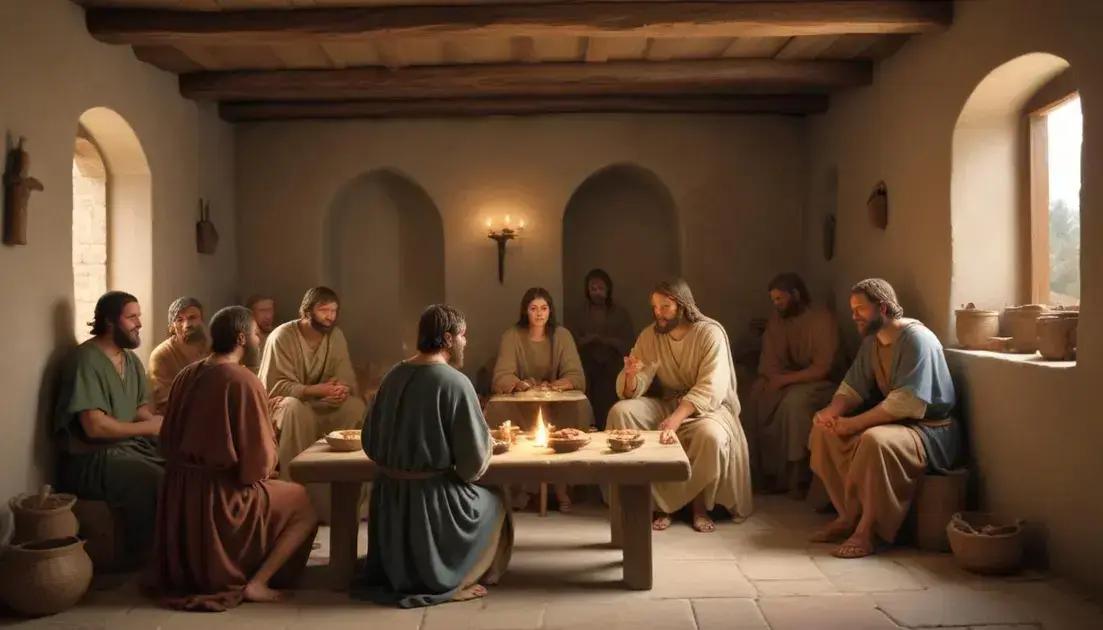
House Churches: Christian Practice Before the Basilicas
House churches were vital in the early Christian community, allowing believers to gather closely and share their faith in safe, intimate environments. Over time, as Christianity grew, basilicas emerged to provide larger spaces for worship. This shift reflected a changing society, moving from smaller, personal gatherings to grander communal experiences. However, the essence of house churches remains significant today, reminding believers of the importance of community and personal connections in their faith journey.
Have you ever wondered about the early gatherings of Christians? House Churches played a pivotal role in shaping their faith long before grand basilicas became the norm. Let’s dive into this fascinating aspect of history!
Introduction to House Churches
House Churches played a vital role in early Christianity. In ancient times, small groups of believers gathered in private homes to worship together. This setup allowed them to connect deeply with each other and share their faith.
Unlike the grand basilicas of today, these gatherings were simple and intimate. They encouraged open discussions and personal testimonies. People felt free to express their thoughts and doubts, fostering a sense of community.
During this time, house churches were often the only places where Christians could come together in peace. Many faced persecution, which made private homes a safe haven for worship.
This kind of church helped shape the early church’s culture. The focus was on relationships, not rituals. Everyone participated, sharing in the prayer and teaching. It was a space where faith was active and lived out daily.
As Christianity grew, the need for larger spaces became clear. However, the essence of gathering in homes remains crucial today. We still see the impact of house churches in modern communities, reminding us of that rich history.
Historical Background
The historical background of house churches is rich and fascinating. In early Christianity, followers often faced dangers for their beliefs. They couldn’t gather openly in public places. Instead, they met in homes, which allowed for secrecy and safety.
These gatherings started around the time of Jesus’ ministry. His followers began to form small communities. They shared meals, prayed, and studied scriptures together. This practice helped strengthen their faith during tough times.
Over the years, house churches became popular. They were places of comfort and support. People from different backgrounds united in these homes. They shared stories, teachings, and personal experiences.
As Christianity spread, the Roman Empire became concerned. They viewed these gatherings as a threat. This led to persecution. Many Christians had to hide their faith, making house churches essential. They provided a safe space where believers could grow spiritually.
This form of gathering allowed for a strong sense of community. Members built lasting relationships. They helped each other in daily life and offered support in faith. Today, we remember these early house churches as the foundation of modern Christianity.
The Role of House Churches
The role of house churches in early Christianity was crucial. These spaces allowed believers to come together freely. They fostered community and support among members during difficult times.
In house churches, everyone had a part to play. Members led prayers, shared teachings, and encouraged one another. This involvement made faith personal and vibrant. It was more than just attending a service; it was about living out their beliefs.
These gatherings also provided a safe environment. During periods of persecution, they served as hideaways for Christians. Here, they could worship without fear of being discovered.
House churches become a model for learning. They often discussed the scriptures and shared experiences. This helped deepen their understanding of faith and created strong bonds.
Moreover, house churches contributed to spreading Christianity. As members felt empowered, they shared their faith with friends and family. This organic growth helped the early church expand beyond its initial circle.
Today, the legacy of house churches continues. Many modern communities still value small, close-knit gatherings. They remind us of the early days of Christianity and emphasize connection, support, and shared faith.
Transition to Basilicas
The transition from house churches to basilicas marked an important change in Christianity. As the faith grew, the need for larger spaces became clear. House churches, while intimate, couldn’t hold the increasing number of believers.
Basilicas offered more room for worship and gatherings. They became central places for community and faith. These buildings were designed with features like large spaces and elaborate decorations. They were built to honor God and accommodate many worshippers.
This shift also reflected a change in society. As Christianity gained acceptance, it moved from hidden meetings to public worship. Many basilicas were built in prominent locations. This made faith more accessible to the wider community.
Additionally, church leaders started to take on more formal roles. The structure of gatherings changed, with set rituals and ceremonies. This helped in providing consistency across different locations.
Despite the growth of basilicas, some still valued the spirit of house churches. They remembered the importance of community and personal connections. Even in larger settings, the foundation of faith felt personal and engaging.
Today, both house churches and basilicas play a role in Christianity. Each serves a different purpose and meets the needs of different people.
Conclusion
House churches played a vital role in early Christianity, allowing believers to connect deeply. These intimate settings encouraged participation and personal growth in faith.
As Christianity spread, the need for larger spaces led to the rise of basilicas. These new buildings transformed the way people worshiped. They created a more formal environment for gatherings and ceremonies.
Yet, the essence of house churches remains important. They remind us of the value of community and personal relationships in faith. Many modern believers still find strength in smaller groups.
Both house churches and basilicas hold significance in today’s Christianity. Each serves a unique purpose and meets the needs of different followers.
Conclusion
In conclusion, house churches played an important role in early Christianity by fostering community and support among believers. These small gatherings allowed people to connect deeply and share their faith in a safe environment.
The rise of basilicas marked a significant shift as Christianity grew. These larger spaces provided a way for many more people to worship together. They became central to the faith and allowed for more formal ceremonies and rituals.
However, the spirit of house churches remains valuable today. They remind modern believers of the strength found in small communities and personal connections. Both house churches and basilicas serve meaningful purposes in the lives of Christians today.
By appreciating the rich history of these gatherings, we can better understand how faith has evolved over time and continue to nurture our spiritual connections in various settings.


